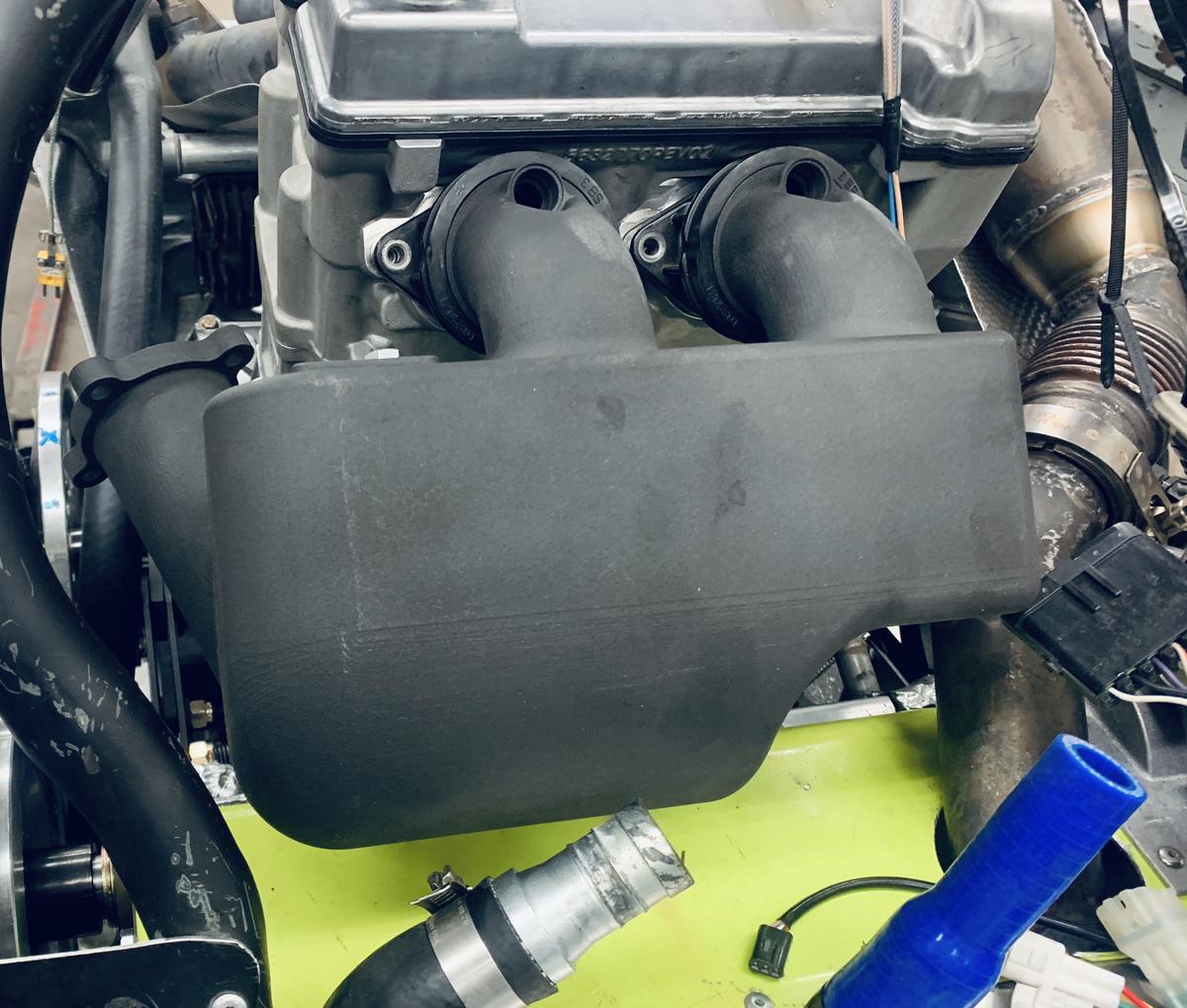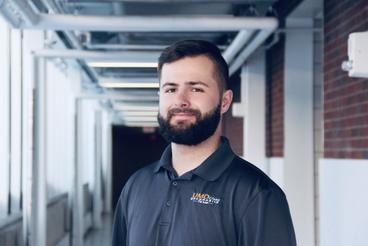Last year, they came in second place. This year, they are working hard to do even better.
A team of 16 UMD undergraduate students are competing again in the International Clean Snowmobile Challenge in Houghton, Michigan, March 4 – 9. Their goal is to modify a snowmobile that performs well while reducing emissions and noise.
“We took what we learned last year about the competition and really upped our game,” said team member Josh Dronen. “We feel really good.”
The students organized themselves into small groups take on different parts of the sled to modify. Dronen, a senior in the Swenson College of Science and Engineering, is leading a group that is modifying the engine’s intake system. But what he wanted to do didn’t seem possible, until he learned that NRRI had the prototyping capabilities he needed – selective laser sintering with carbon fiber nylon composite material.
“It’s the strongest material we have to build parts with here,” said Kory Jenkins, NRRI Prototype Lab manager. “I’m glad we were able to meet the geometry and strength requirements for his application.”
The carbon fiber nylon composite is a material that’s generally used in aerospace components. NRRI has used it in the past to build parts for the UMD Rocketry Team, local industry and entrepreneurs.
Using computer modeling and simulation, Dronen and his group knew the intake manifold would require a complex shape to supply enough air while staying within the size constraints of the snowmobile. Additive manufacturing makes it possible to create parts with very complex shapes in a short period of time.
“We wanted to get uniform air flow to the engine so it can run as efficiently as possible,” said Dronen. “Building this part at NRRI was key to our redesign.”
The competition is organized by the Society of Automotive Engineers to create a snowmobile that would be acceptable for use in environmentally sensitive areas, like National Parks. Twenty two teams are competing in the event this year that includes inspections by professional engineers, a 100 mile endurance run, cold start tests, handling and acceleration courses and technical presentations.
In addition to making new friends on the team, Dronen appreciates the opportunity to take what he’s learned in class and apply it to a real, hands-on situation. Last year’s competition earned him an internship with BorgWarner, Inc. in Ithaca, New York working in fluid simulations.
“When I graduate, I’d love to continue working in fluid simulations in the automotive industry,” he added. “The competitions have been a very fulfilling experience.”
While NRRI doesn’t have a teaching mission, engaging with students to assist with projects or to put their classroom knowledge to work on real-world challenges is an important part of the institute’s outreach.

